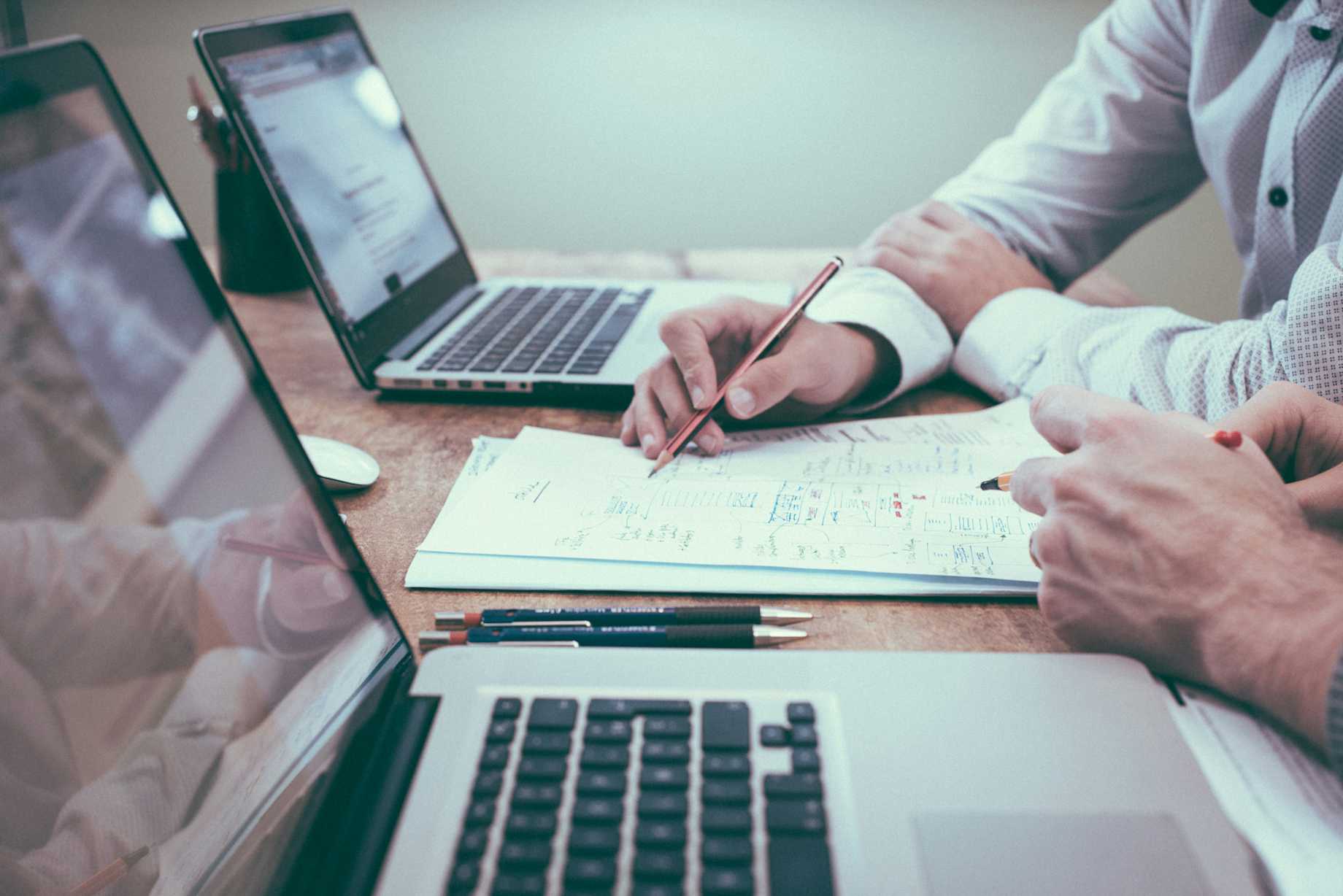Designing A Workplace That Increases Creativity
ByJulian Gette
Workast publisher

Workast publisher
Designing a creative workspace that suits different types of workers requires an understanding of their varied needs. Each worker has unique responsibilities, and the workspace should support both focus and collaboration.
With so many different types of workers, meeting their diverse needs can be challenging. However, providing a variety of spaces helps. Dedicated areas for focused work, teamwork, and social interactions contribute to a well-rounded environment. Access to the right tools and technology ensures workers can transition smoothly between these spaces. A thoughtfully designed workspace increases productivity and enhances well-being and overall job satisfaction.
This article will explore how different workspace designs can meet the needs of various workers. It will focus on creating environments that support both individual efforts and collaboration.
Anchors spend most of their time at their desks, working on tasks that require minimal movement except for meetings. They serve as a central point of information and prefer to organize their day into focused work, collaboration, and social activities.
Connectors split their time between their desk and other areas like meeting rooms or visiting colleagues' desks. They interact across departments and rely on technology to work while moving around. Their role bridges different office functions, linking teams and ensuring smooth communication.
Gatherers divide their time between the office and external locations, like client sites. They collect information and connections outside the office, returning to share and process what they’ve learned. Since they’re not in the office full-time, they often use shared or hot desks.
Navigators, such as consultants or salespeople, spend most of their time off-site. They occasionally visit the office for meetings and need temporary desk space when they do. Though they work outside the office, staying connected to the organization is important to share their valuable external insights.
Administrative workers handle routine tasks like scheduling, record-keeping, and managing customer inquiries. They need designated desk areas with access to files and equipment. Quick access to spaces for short discussions or problem-solving is also helpful.
Designers, marketers, and other creatives need environments that inspire new ideas. Their workspace should offer open areas for brainstorming as well as quiet zones for tasks like designing or writing. Tools that support creativity and collaboration are crucial.
Managers and supervisors oversee teams and require private areas for meetings and confidential discussions. Meeting rooms are important for strategic talks, while their workspace should balance accessibility to the team and privacy for sensitive tasks.
Workers who visit the office occasionally, like remote or field staff, need temporary desks or shared spaces. Their main need is a spot to meet with colleagues, share updates, and complete tasks during short office visits. The right setup keeps them connected and productive.
Here are a few ways to make the workspace more engaging and conducive to creativity:
In modern offices, most work happens on laptops, so the traditional "one desk, one employee" model is no longer necessary. Offering a variety of work environments can benefit employees. Consider options like hot desking or desk booking, and provide different spaces to suit individual preferences. Big tables, small desks, couches, standing desks, and even breakout areas can help cater to various working styles. Movable desks also work well for employees who prefer change throughout the day.
Common areas, like libraries or cafés, can increase office morale and camaraderie. These communal spaces make it easier for workers to interact, collaborate, and enjoy their work environment. Providing these areas in your office may enhance both teamwork and satisfaction.
Mark Hanson, Founder of SunTinoSolarLights said, a clean, uncluttered space can make a big difference in how employees feel. A cluttered desk may not always inspire creativity, and too much mess can lead to distractions. Focus on keeping the office organized and make sure there's enough open space. When the office feels tidy, workers are more likely to feel relaxed and focused, which can lead to better productivity and new ideas.
Some offices offer a playroom where employees can unwind and have fun. Taking a break to play can relieve stress and allow workers to reset. A dedicated space for relaxation and interaction can also spark new ideas. Casual conversations often lead to creative solutions. Playrooms provide opportunities for team members to bond and step away from their desks. It makes them feel more energized and connected when they return to work.
Mina Daryoushfar, Designer & Founder of Rugsource said, using color in an office can inspire creative thinking. Different colors can affect mood and energy levels. For example, blues and greens are calming and help create a peaceful environment. Meanwhile, reds and oranges bring warmth and are known to increase creativity.
White walls, though clean and crisp, might not be the best option for productivity or creativity. Studies show that people tend to make more mistakes in white spaces. On the other hand, many professionals prefer to work in rooms with blue and green tones.
If a full repaint isn’t possible, there are still ways to add color to an office. Acoustic furniture, for instance, can serve both functional and aesthetic purposes. These items help with noise reduction and add vibrancy to the space.
Skog: This floor screen comes in various colors, like green for calmness or orange for warmth. It works as both a decorative piece and a noise-reducing screen.
Mezzo: A versatile floor screen that can be used as a mobile project board. It absorbs sound and comes in a variety of colors, brightening up the workspace.
Dezibel Floor: A minimalist noise-reducing screen. It’s available in different fabrics and colors, letting you personalize the look and feel of your office.
Focus Table: If the desk lacks color, the focus table can add some. It creates a small private area and can be easily folded when not needed. This is ideal for flexible workspaces.
Fazett: An acoustic wall system in different colors and patterns. It can cover large surfaces, helping to reduce noise and inspire creativity through its design.
Artwork can spark creativity in the workplace. Paintings, photos, or sculptures bring life to the walls and encourage fresh ideas. Choosing pieces that reflect the company's culture can promote a creative mindset and align the team with the organization's values.
Walls should not just serve as structural support but also as platforms for inspiration. When designing the office, consider how both the colors and artwork can influence creativity.
Sometimes, all it takes is a bit of external inspiration to spark new ideas. Creative days are a common practice in creative industries, but they can also benefit corporate teams. This idea is based on the "Artist Dates" concept from Julia Cameron's book The Artist’s Way.
Creative days don’t have to be complicated. They can be enjoyable if approached with a sense of adventure. Activities like museum visits, exhibitions, or even life drawing and pottery classes can stir up new thoughts. Even if these activities aren’t directly related to the work, they engage the frontal cortex, which is the center of creativity. This can help employees think in new and different ways. Just like the hot stamping machine, the patterns produced by the hot stamping may not be very complicated, but they are very artistic.
Sharat Potharaju, CEO of Uniqode said, many employees hesitate to share ideas due to fear of rejection. If management regularly dismisses suggestions, employees may stop offering input altogether. This can lead to an unengaged workforce, where employees operate on autopilot. For companies aiming to inspire creativity, this is the worst outcome.
To avoid this, make sure employees know their opinions are valued. When workers feel appreciated, motivation and engagement grow. It's helpful to create different ways for employees to share their thoughts. Offering an anonymous way to submit ideas encourages honesty. Tools like SurveyMonkey make it easy to collect anonymous feedback.
Building a transparent work culture can further enhance this. Regular meetings where employees can share suggestions create a safe space for open discussion. Encouraging leadership to maintain an open-door policy promotes collaboration across the company.
Sometimes, employees struggle to come up with creative solutions because they lack the necessary tools and resources. Ensure that physical and technological resources are available to support brainstorming sessions. Meeting rooms should be equipped with sketch pads, markers, and sticky notes to help spark creativity during discussions.
Ivaylo Georgiev, SEO Manager of VPSBG said, in addition to physical tools, access to the right technology is important. Depending on the industry, this could range from research databases and image libraries to project management software and creative tools. For example, platforms like Forecast provide integrated intelligence to streamline creative work. It helps teams focus on their best ideas and make every project count.
Bringing nature indoors can have a calming and inspiring effect on employees. Incorporating plants, greenery, and natural light in the workspace helps reduce stress and increase creativity. Plants improve air quality and enhance the aesthetics of the office, making it feel more lively. Allowing more natural light into the office can increase productivity and uplift moods. If natural light is limited, using light bulbs that mimic daylight can also be helpful.
Creativity doesn’t always follow a strict 9-to-5 schedule. Giving employees the freedom to choose when and where they work can spark creativity. Some people may feel more inspired early in the morning, while others might prefer working in the evening. Offering flexible hours allows workers to tap into their creative energy when they’re most productive. Encouraging a flexible work schedule or remote work options can also help employees find the environment that suits them best.
Shared areas, like kitchens and printer rooms, play a key role in a workspace. They are just functional and they also encourage interaction among employees. A well-designed kitchen serves as a social hub, allowing team members to connect over coffee or lunch. This informal setting can create good relationships and promote a sense of community.
On the other hand, printer rooms should be strategically located to minimize disruption. Employees should have easy access without interfering with quiet areas. This balance is essential for productivity. A clutter-free, organized printer room can help keep workflow smooth.
The size and layout of these shared spaces matter. A spacious kitchen with comfortable seating can invite people to gather. In contrast, a cramped printer room may lead to frustration. By designing these areas with care, organizations can enhance collaboration and improve the work environment.
Designing a workspace is more than just arranging furniture. It has to do with aligning the environment with the company's goals and creating a space where people can work effectively. The workspace should support focus, teamwork, and creativity. For concentration, areas need to be free from distractions, using lighting, colors, and furniture that promote clear thinking.
Collaboration spaces should offer different levels of privacy for both casual and formal meetings. Grouping employees also needs careful planning. Teams can either be kept close or spread out depending on the work style. Thoughtful design helps create a balance between focused work and collaboration, boosting overall productivity.
Take a closer look at your office layout. Are your shared spaces inviting and accessible? Consider how you can improve them to enhance teamwork and productivity. Small changes can make a big difference. Invest in your workspace today for a more engaged and connected team tomorrow.

